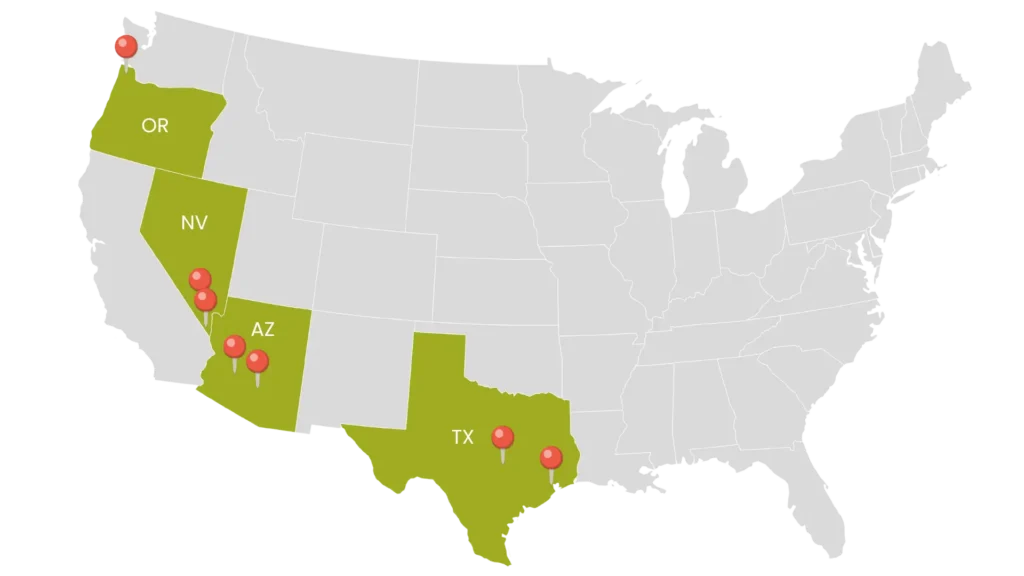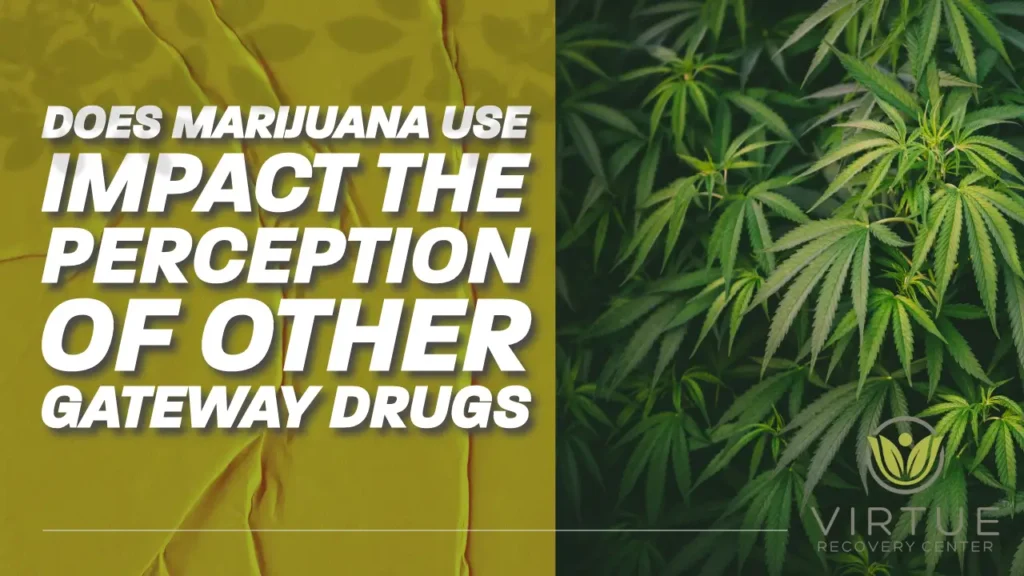As marijuana becomes increasingly normalized in society, many wonder about its impact on the use of other gateway drugs. Are individuals more likely to experiment with other substances once marijuana is accepted? Does the perception of gateway drugs change when marijuana is seen as more socially acceptable? The answers to these questions have significant implications for addiction prevention and public health. Let’s explore the relationship between the normalization of marijuana use and the use of other gateway drugs and how it affects our perception of these substances.
Key Takeaways:
- The normalization of marijuana use raises concerns about an increase in the use of other gateway drugs.
- Gateway drugs are substances that can lead to the use of more addictive and harmful substances.
- Societal attitudes towards marijuana influence perceptions of other gateway drugs.
- Understanding the impact of marijuana normalization is crucial for effective prevention and intervention strategies.
- Comprehensive drug education programs need to address the specific risks of gateway drug use among teenagers.
The Concept of Gateway Drugs
Gateway drugs are substances that are believed to open the door to the use of more addictive and dangerous drugs. While the concept of gateway drugs has been widely debated, there is evidence to suggest that early experimentation with certain substances can increase the risk of developing addiction and substance abuse problems in the future.
Common gateway drugs include marijuana, alcohol, and tobacco. These substances are easily accessible and often used during adolescence when the brain is still developing, making teenagers more susceptible to the effects of drugs.
Understanding the role of gateway drugs in initiating drug use and addressing the risk factors associated with teenage drug use is essential for effective drug education and prevention strategies.
By educating young people about the dangers of illicit substances and providing them with the necessary tools to make informed choices, we can help prevent drug addiction and substance abuse in our communities. It is crucial to address the underlying issues that contribute to teenage drug use and to promote healthy coping mechanisms and positive alternatives to drug use.
Together, we can create a society that prioritizes the well-being of our youth and works towards eradicating the devastating effects of drug addiction.
The Impact of Marijuana Normalization
The normalization of marijuana use has had a significant impact on societal attitudes towards drug use. With the legalization and increasing acceptance of marijuana, there has been a shift in perception from viewing it as a harmful substance to a recreational and medicinal product. This change in perception can have unintended consequences, particularly among adolescents and young adults who may perceive marijuana as less risky or dangerous.
Studies have shown that perceptions of lower risk and increased availability of marijuana are associated with higher rates of use among adolescents. This raises concerns about the potential for increased adolescent drug use and the need for comprehensive prevention programs that address the specific risks of marijuana use and its potential impact on future addiction rates.
Public health concerns also arise, as the normalization of marijuana use may contribute to an overall increase in drug abuse and addiction rates. It is crucial to recognize these societal impacts and develop strategies to mitigate the potential harm caused by the normalization of marijuana use.

By implementing effective addiction prevention programs and raising awareness about the risks associated with adolescent drug use, we can work towards creating a society that prioritizes the well-being of its individuals. It is essential to address the public health concerns surrounding the normalization of marijuana use and take steps to protect vulnerable populations, especially teenagers, from the harmful effects of drug abuse and addiction.
With a focus on education, intervention, and support, we can empower individuals to make informed decisions about their health and well-being, ultimately promoting a healthier and safer society.
Understanding the Gateway Theory
The gateway theory suggests that the use of certain substances, such as marijuana, alcohol, or tobacco, can open the door to the use of more dangerous and addictive drugs. According to this theory, early experimentation with gateway drugs can lead to increased tolerance, dependence, and the eventual desire to seek out stronger substances.
It is crucial to understand the risk factors associated with gateway drug use in order to implement early intervention and prevention strategies. One major factor is peer pressure, which can influence individuals to try harmful substances in an attempt to fit in or be accepted. Additionally, exposure to these substances can increase the likelihood of individuals progressing to more dangerous drugs.
You're Not Alone in This Journey
At Virtue Recovery Center, we truly understand the struggles of addiction because we’ve been there. Every month, we connect with thousands who are fighting just like you. Our navigators, many of whom have firsthand experience with addiction, are ready to listen to your story and provide the understanding and support you need.
Discover a community where you’re always heard. Learn more about how our navigators can guide you towards recovery.
Recognizing warning signs is another key aspect of early intervention. These signs may include changes in behavior, deteriorating school performance, mood swings, or withdrawal from social activities. By being aware of these warning signs, it is possible to identify individuals who may be at a higher risk and provide them with the necessary support and guidance.
To combat the addiction risks associated with gateway drug use, early intervention is crucial. By implementing targeted prevention strategies that address the peer pressure, exposure to harmful substances, and warning signs, we can significantly reduce the potential for addiction and mitigate the societal impact of gateway drugs.
Conclusion
Addressing drug addiction and substance abuse requires a comprehensive approach that takes into account the societal impact of gateway drugs and the normalization of marijuana use. To create a safer and healthier society, we must focus on promoting addiction recovery, increasing drug awareness, implementing prevention programs, and developing effective intervention strategies.
Looking for more information on marijuana? Check out our article on how daily marijuana use outpaces drinking.
Are You Covered For Treatment?
At Virtue Recovery Center, we understand the importance of accessible care. That’s why we’re in-network with numerous private insurance companies, ensuring that your journey to recovery is supported from the start. Let us help you quickly and easily verify your insurance coverage. Begin your path to healing today.
One crucial aspect of addiction recovery is providing support and resources for individuals seeking to overcome their dependencies. By offering rehabilitation programs, counseling services, and access to treatment facilities, we can help those struggling with addiction find the support they need to recover and rebuild their lives.
Furthermore, it is essential to prioritize drug awareness among individuals of all ages, especially the vulnerable age group of teenagers. By educating young people about the potential risks and consequences of drug use, we can empower them to make informed decisions and avoid falling into the trap of substance abuse.
Prevention programs play a vital role in addressing drug addiction and substance abuse. We can equip individuals with the knowledge and skills to resist peer pressure and make healthier choices by implementing targeted prevention strategies at schools, community centers, and other relevant settings.
Finally, effective intervention strategies are crucial in identifying individuals at risk and providing early support. By recognizing warning signs and offering timely interventions, we can prevent the progression from gateway drug use to more harmful substances and increase the chances of successful recovery.
By adopting these prevention strategies, promoting addiction recovery, and prioritizing drug awareness, we can work together to create a society where individuals are empowered to lead drug-free lives and overcome the challenges of addiction.
Find Drug Rehab and Detox Treatment Centers Near You
Find facilities that specialize in addiction treatment

FAQ:
Q: What are common gateway drugs?
A: Common gateway drugs include alcohol, tobacco, and marijuana.
Q: How does the normalization of marijuana use impact the perception of other substances?
A: The normalization of marijuana use can sometimes lead to increased acceptance or curiosity about using other substances, which may contribute to the perception that marijuana is a gateway drug.
Q: What is the gateway drug theory?
A: The gateway drug theory suggests that using certain substances, like marijuana, may lead to the use of more dangerous or illicit drugs in the future.
Q: Is marijuana considered a gateway drug?
A: While some studies support the idea that marijuana use can lead to using harder drugs, not everyone who uses marijuana will go on to use other substances.
Q: How does substance use impact the development of alcohol use disorder?
A: Substance use, including marijuana use, can increase the risk of developing an alcohol use disorder, according to the National Institute on Drug Abuse.
Q: What are the effects of marijuana use on the likelihood of using other drugs?
A: People who use marijuana are statistically more likely to use other substances, such as cocaine or prescription drugs, compared to those who do not use marijuana.
Q: How does alcohol rehab play a role in preventing gateway drug use?
A: Alcohol rehab programs can address substance use disorders and provide support to individuals who may be at risk of using gateway drugs like marijuana, helping to prevent further drug use.



























